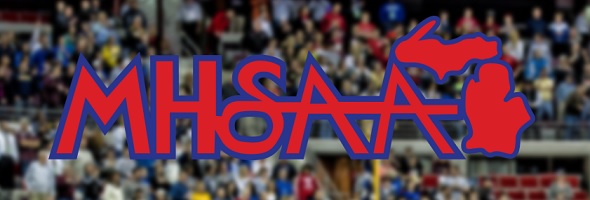
This Week in High School Sports: 9/18/15
September 18, 2015
This edition of This Week In High School Sports leads with a story on Constantine three-year quarterback Matt Hasbrouck, passes out three This Week Game Balls for outstanding performances, and presents a real view of day-to-day life for referees.
This Week In High School Sports will lead each show with feature stories from around the state from the MHSAA’s Second Half or from network affiliated stories and interviews. "Be The Referee," a 60-second look at the fine art of officiating, highlights the middle of the show and is followed by a closing "Perspective."
Listen to this week’s show by Clicking Here.
Past editions
Sept. 11: Mount Morris volleyball's Tabit twins, the truth about specialization - Listen
Sept. 4: Engadine/Brimley football, Good-bye to "a few good coaches" - Listen
Aug. 28: Ithaca football, MHSAA Health & Safety initiatives - Listen

NFHS Voice: Your Best Sports Option
September 18, 2019
By Karissa Niehoff
NFHS Executive Director
Recent articles have documented the rising costs of club sports, with one noting that about 62 percent of “travel ball” parents will go into debt to involve their kids in year-round sports.
A USA Today article in 2017 suggested that travel baseball or volleyball could cost a family upwards of $8,000 a year, with soccer running about $5,000 on the high end. A study by TD Ameritrade suggested some parents were spending about $100 to $500 a month to fund their kids’ participation on a club team, with about 20 percent spending $1,000 a month.
Why? In some cases – unquestionably the minority – students are in the elite category from a skills standpoint and could benefit from a higher level of competition in preparation for college. In most cases, however, it is a case of parents spending beyond their means with the hope that playing club sports will be the difference-maker in their children receiving an athletic scholarship to an NCAA Division I school.
It is, in fact, true that an overwhelming majority of NCAA Division I athletes played club sports. According to an NCAA survey, 92 percent of women and 89 percent of men played club basketball, and 91 percent of women’s volleyball players competed on a non-school team in high school. At the other end, however, only 24 percent of football players competed on a club team.
Herein lies the difference. There are more than 540,000 boys who played high school basketball last year and fewer than 6,000 who played basketball at the NCAA Division I level where most of the scholarships are available. Stated another way, about one percent of high school boys basketball players will play at the NCAA Division I level. About 2.8 percent of the one million-plus boys in high school 11-player football will play at the Division I level.
The answer? Parents should encourage their kids to play multiple sports for their high school teams and save the money they would spend on club sports for college tuition if scholarship money does not materialize. Even in those situations where students are charged a modest fee to participate, school-based sports remain an incredible bargain when compared to club sports.
In many cases, Division I football and basketball coaches are looking to recruit multiple-sport athletes. While there are a few sports where non-school competition is crucial, college coaches will find those athletes who excel in school-based sports.
High school-based sports have more interest, more media coverage and more fans than club sports, and the kids have more fun because they are representing their team and their community.
Playing one sport in the fall, another during the winter and yet another in the spring is the best route to future success – whether that success is on the playing field or court, or in a boardroom.
Dr. Karissa L. Niehoff is beginning her second year as executive director of the National Federation of State High School Associations (NFHS) in Indianapolis, Indiana. She is the first female to head the national leadership organization for high school athletics and performing arts activities and the sixth full-time executive director of the NFHS, which celebrated its 100th year of service during the 2018-19 school year. She previously was executive director of the Connecticut Association of Schools-Connecticut Interscholastic Athletic Conference for seven years.

